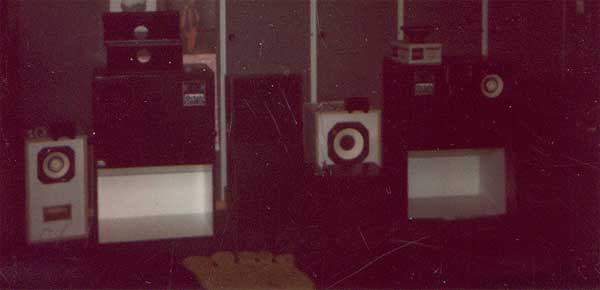B-Sound
is for
is for
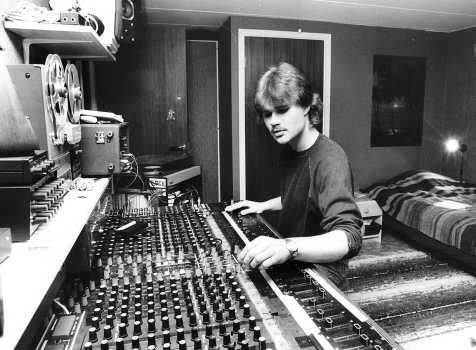
Photo: © Magnus Johnson of Östgöta Correspondenten
who visited Bosse Sound in the B-Sound basement March 1982.
It's a pleasure to have you here in Wheelsbridge Town together with all the beautiful but sweaty and smelly boys and girls. They're here to become pop stars for a reasonable and low cost. It is cheap here for two reasons, no basement rent to pay and many machines are home made. However, some of the bands pay quite a lot because they stay here 10 hours for each hour they can afford in a normal sound recording studio. You have probably travelled here with a time machine, we are in the early 80's now.
Let me explain what we do here. The pop stars do produce some sound or screaming, bawling and rumbling noise as my neighbours call it. Each pop star has one or several microphone(s) near him/her. They are connected by two wires and a shield each to the home made mixing console. At the mixing console (the PCBs are produced by using hydrochloric acid and hydrogen peroxide), the shield is connected to the chassis and the other two to the input transformers. 24 such input transformers exist. Then the signal goes to the low noise operation amplifiers, filters, potentiometers, limiters, gates, compressors. Then the signals are mixed together or fed separately to the 8-track Fostex machine.
When the pop stars feel they have produced sufficient noise for the songs, the real mixing session starts. I press the green play button on the remote control (built into the mixing console) of the Fostex A-8 and we start adjusting levels and connection of the spring-reverb, the tape echo, the 40 ms delay circuits (analogue shift registers built in the mixing console), the limiters, the analogue frequency doubler, the compressors (Marenius and Trident), the analogue gates (home-made) and equalizers (home-made). Then it is time to press the red record button on remote control in the mixing console for the 2 channel Revox A77 to produce the master tape (Ampex 456). Normally that tape is then just played to record TDK AD cassettes with the Yamaha K-960 but sometimes we bring it to the Neuman engraving stylus at the Cutting room in Solna to do real vinyl. It is not possible to encode mp3 because the personal computer in the house, Luxor ABC 80 does not have enough memory (just 16 kbyte) and speed (1 MHz Z80 CPU) and the efficient mp3 encoding that dupes the ears that it's wav-format isn't invented by the German Fraunhofer team yet.
Why so many candles in the basement? We had a little problem December 27, 1983. I had recorded the Dyzenteri music but not the warm voice of killing Miss Y (Linköping's Tina Turner who can really sing). So suddenly a problem, no light but much more worse, no 220V, 50Hz to the Fostex and the mixing console! I checked the house fuses (they are in this mixing room). All are OK. I tried to call "Tekniska Verken" that is responsible for the electrical power in Linköping but the line was busy. After a while, I had to fetch some candles in the kitchen and carry the battery powered radio down to Miss Y. My intention was to play some music for her, I did know that she can't stand long time in silence. When I turned it on, just a lot of talk about the problem, almost the whole Sweden without electricity. It was judged to be solved within an hour but I sat with Miss Y in the romantic candle light the whole day until she and Tommy had to go out in the darkness of Wheelsbridge Town.
May I propose you now take your Walkman and listen to the cassette tapes Bosse has copied for you. Among the tapes you can find sounds from the time before the equipment was installed in the basement, before any good microphones were bought as well as sound from this basement. Another type of rare sound can also be found, the sound recorded live with another little home made mixing console connected to the Fostex. Unfortunately, I think it was just Andra Sidan, -Ism, Zvensson recorded live with 8 tape tracks. The other live recordings you can find are direct mixed with headphones to the Revox A77 or the Tandberg 9100X.
Any real pop stars? Yes, the live bands (Ebba Grön and Motvind. Information for you born after 1980: Motvind was big as Ebba Grön before the punk. The genre was PROGG). Real star is one of the singers. Most of the youngsters are normal persons now (although some of them are directors). However, many of them still have a dream, to enter the big Stage.
Please enjoy surfing around on the tapes and understand it is a wide mix of different kinds of noise at this site. The genre is PUNK, NEW WAVE, PUNK-POP, ANTI VEGAN HARDCORE, HAPPY-POP, (SVEN)SKA ROCK, POP, HARD ROCK. If you dislike or like anything, you have to pay by sending me an email with your beautiful words!
Best regards
Bosse
![]()
P.S.
Here comes some more stuff but you have to speak Swedish to understand
most of the written or verbal material. But the three chords the pop stars
produce I am sure you understand.
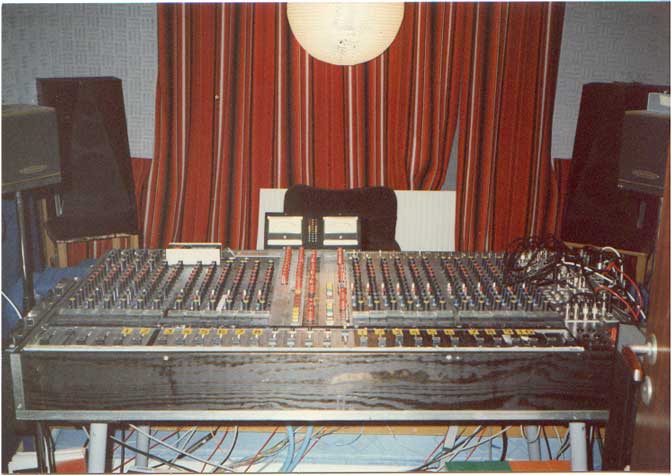
The mixing console made by Bosse above. All 24 input channels with balanced
inputs and 48 V phantom output voltage to capacitor microphones and 12
output channels ready.
FEELING FROM LENA & HARALD (5:08)

Click on this picture to see the little mixing console for live recordings with
the Fostex A-8!
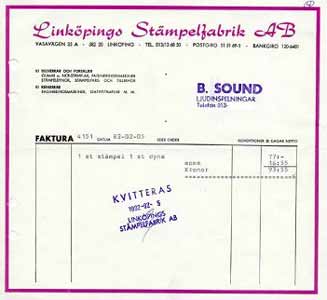
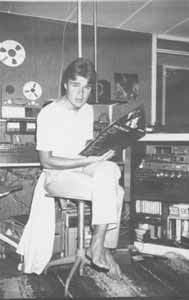
The real name of this site should be B.Sound.com but sound.com was
occupied.... The Fostex 8 channel tape recorder with Dolby C is now visible!
The construction kit Larsholt radio and the construction kit Sentec pre-amplifier
to the right. The small thing on the top right is an active separation
filter for the bass to the subwoofer power amplifier. To gain the power,
it inverse the phase of one channel so the speaker can be connected to
both channels. Above everything is the Dual vinyl phonograph.
Read about Arne. C the mixer.
C your mate. C Bosse's mates.
C Mats in garden-recording:
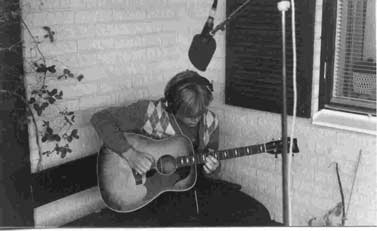
All 'bout The Money:
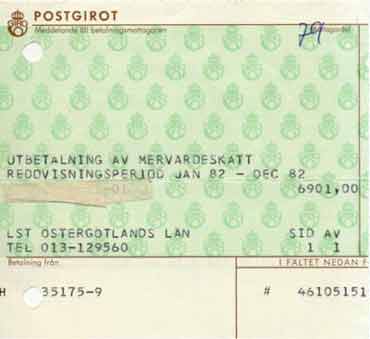
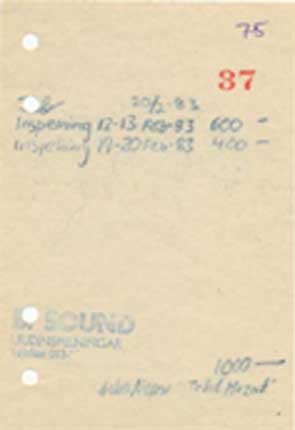
Money in from the state, Money in from a good customer.
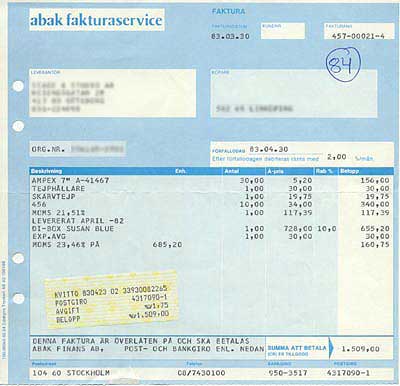
Money out to get the Ampex 456 tapes.
C the Monarped after 95% (the fire flames on the fuel tank are missing) B-Sound modification:
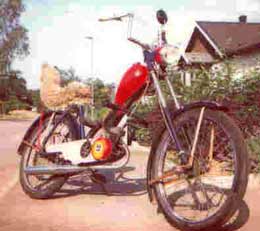
This machine was working well when dry weather, rain caused the belt
to slip. 50 cc, 1 horse-power, 30 km/h.
While riding on this, the Walkman (MP3 wasn't invented) player sound
is of course the ISM hit "Den svarta färgen
(4:00)" when buying black color.

Egg-carton & mattress on the wall, Lars Holm of Kizza
Ping 1981.
C the soldier in service when recordings were impossible:

On service June 6 1983, the Swedish National day. ![]()
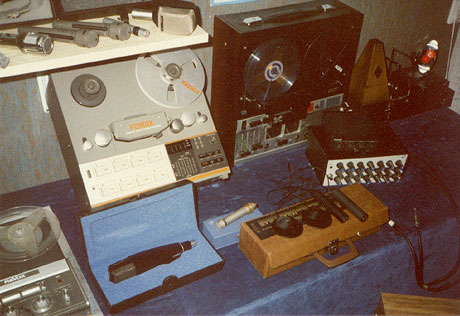
The tape speed of 2 channel Revox and 8 channel Fostex machines are
38 cm/s. The Fostex has to use Dolby C noise reduction. The tape width
of all machines 1/4". Please note the omni directional capacitor microphone
with built in mini tube. The round pressure zone microphones are from Milab
in Sweden. The Tandberg machine max. tape speed is 19 cm/s and the built
in "Sound-on-Sound" switch made the live crowd sound of the Spy hit "Ja
måste gå" possible.
